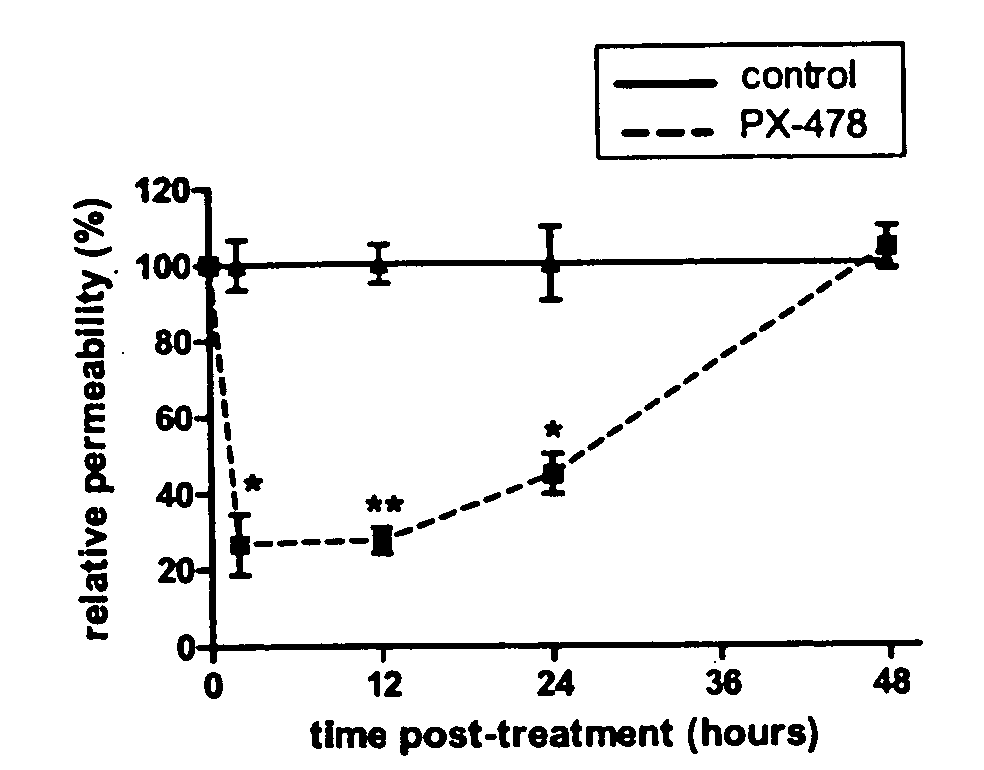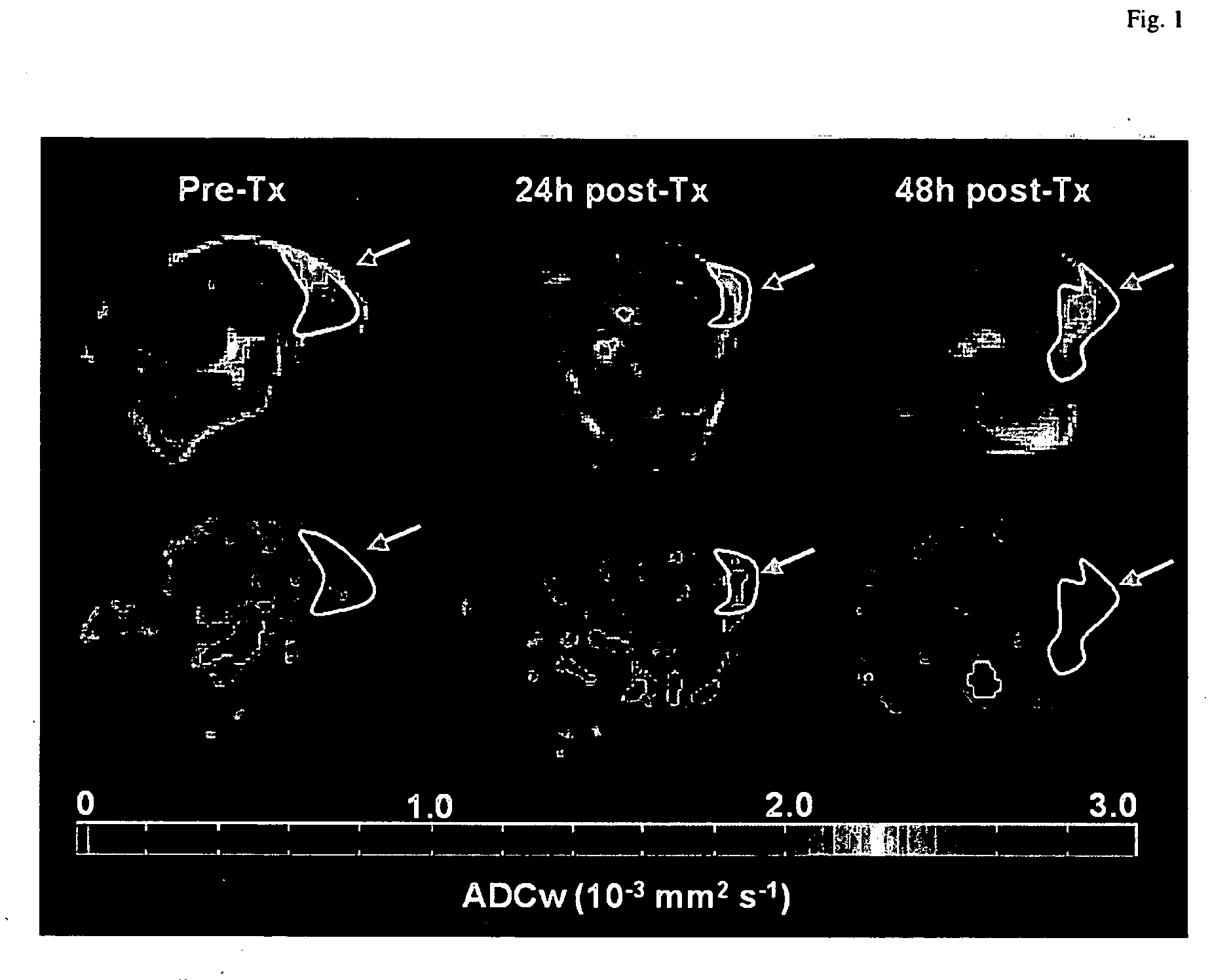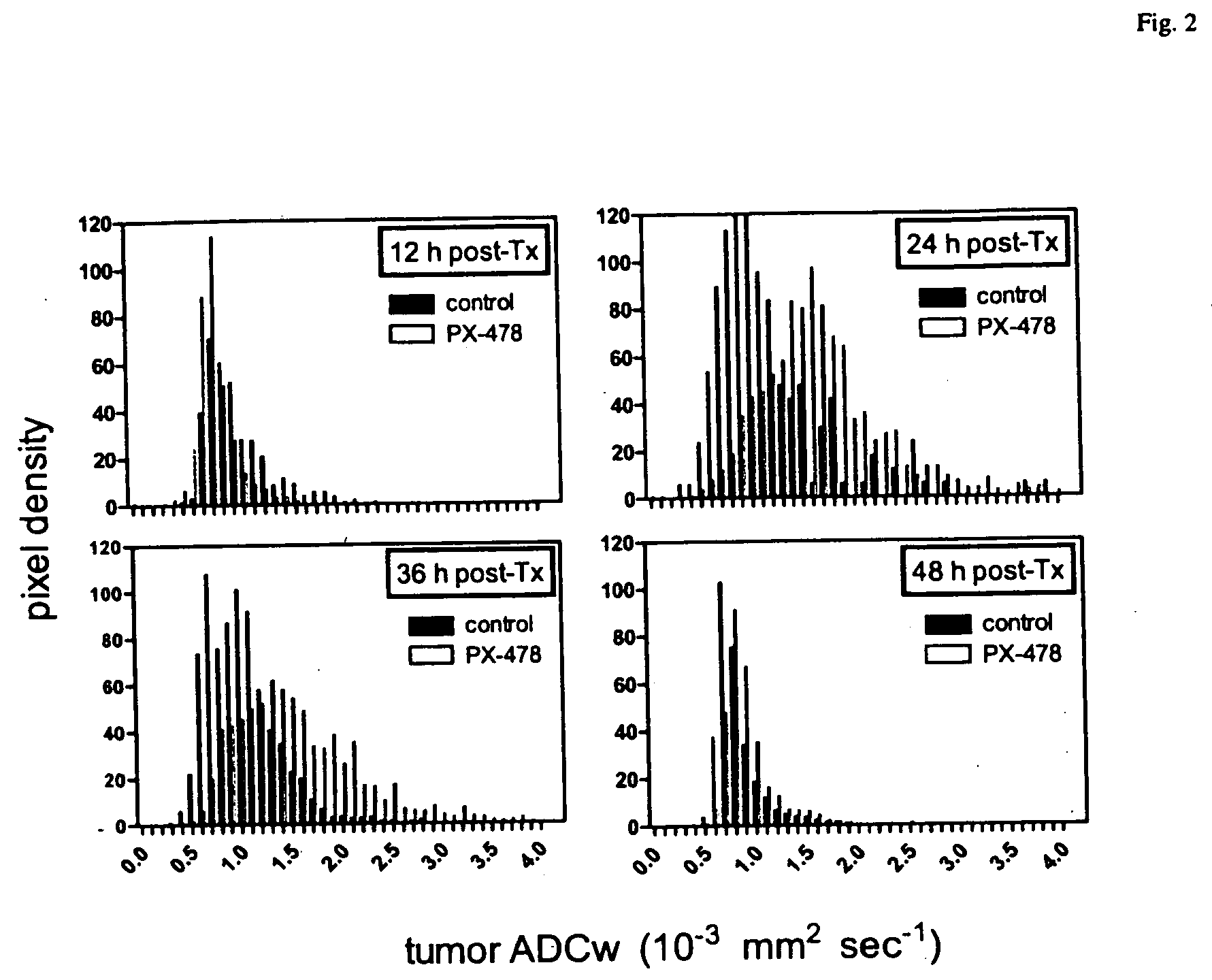Method of preselection patients for anti-VEGF, anti-HIF-1 or anti-thioredoxin therapy
a technology of anti-thioredoxin and patient selection, applied in the field of pre-selection patients for anti-vegf, anti-hif-1 or anti-thioredoxin therapy, can solve the problems of poor prognosis and treatment failure, most aggressive and difficult tumors to treat, hypoxia, etc., and achieve the effect of reducing patient survival, reducing patient redox regulation of transcription factor activity, and increasing trx-1 levels
- Summary
- Abstract
- Description
- Claims
- Application Information
AI Technical Summary
Benefits of technology
Problems solved by technology
Method used
Image
Examples
example 1
[0095] Cell line and tumor implantation. HT-29, a tumorigenic, non-metastatic human colon carcinoma cell line and A-549, a non-small cell human lung cancer cell line, were obtained from the American Tissue Type Collection (Rockville, Md.). Cells were passaged twice weekly with a 1:2 split and cultured in Dulbecco's modified Eagle's medium (DMEM:F12) supplemented with 10% fetal bovine serum (HyClone, Ft. Collins, Colo.). For inoculation, approximately 106 cells in 0.1 ml of media were injected subcutaneously into the right flank of female severe combined immunodeficient (SCID) mice of ages 5 to 6 weeks (obtained from the Arizona Cancer Center Experimental Mouse Shared Services). Mice developed palpable tumors within a week of inoculation. Tumors were allowed to grow to 100-500 mm3 prior to imaging. All animal protocols were approved by the University of Arizona Institutional Animal Care and Use Committee (IACUC).
[0096] Treatments. PX-478 (S-2-amino-3-[4′N,N,-bis(2-chloroethyl)amino]...
example 2
[0107] This example illustrates the effects of PX-478 on HT-29 tumor DCE-MRI parameters. Extravasation of the Gd-BSA was assumed to be describable by a permeability-limited two-compartment model with unidirectional transport of contrast agent on the timescale of the DCE-MRI experiments.
[0108] Parameter maps of permeability and vascular volume fraction were created to visualize the heterogeneity of tumor hemodynamic parameters. Heterogeneities in the distributions of pharmacokinetic parameters have previously been shown in experimental as well as in human tumors. Typical permeability (P) and vascular volume fraction (VV) maps at each time point are shown in FIG. 4. Tumors were identified on proton density-weighted images and delineated by hand-drawn ROIs. Tumor vascular permeability is dramatically decreased in the PX-478 group 2, 12, and 24 h after treatment in comparison with the control group (FIG. 4A). This decrease is no longer observed by 48 h after treatment. Although some in...
example 3
[0111] This example illustrates the effects of anti-VEGF antibodies on HT-29 tumor DCE parameters. In order to assess the ability of the MMCM DCE technique to detect acute changes after treatment with an antitumor agent aimed at decreasing VEGF in this tumor model, human anti-VEGF antibody bevacizumab (Avastin™) was administered to HT-29 tumor bearing mice. A 75% decrease in vascular permeability was observed within an hour of injection of the antibody (95% CI 60.2 to 89.8%, P<0.0001), similar to the changes observed 2 h and 12 h after PX-478 administration (FIG. 7A, Table 1). The anti-VEGF antibody treatment also induced a significant 31.5% (95% CI 25.3 to 37.7%, P=0.023) decrease in vascular volume fraction, unlike treatment with PX-478 (FIG. 7A, Table 1).
PUM
| Property | Measurement | Unit |
|---|---|---|
| Fraction | aaaaa | aaaaa |
| Time | aaaaa | aaaaa |
| Time | aaaaa | aaaaa |
Abstract
Description
Claims
Application Information
 Login to View More
Login to View More - R&D
- Intellectual Property
- Life Sciences
- Materials
- Tech Scout
- Unparalleled Data Quality
- Higher Quality Content
- 60% Fewer Hallucinations
Browse by: Latest US Patents, China's latest patents, Technical Efficacy Thesaurus, Application Domain, Technology Topic, Popular Technical Reports.
© 2025 PatSnap. All rights reserved.Legal|Privacy policy|Modern Slavery Act Transparency Statement|Sitemap|About US| Contact US: help@patsnap.com



